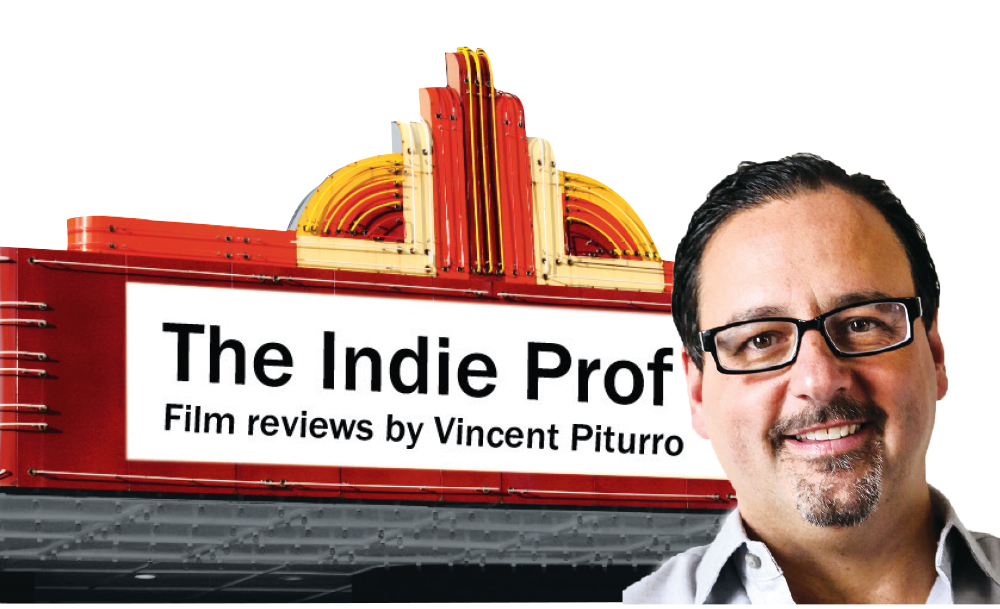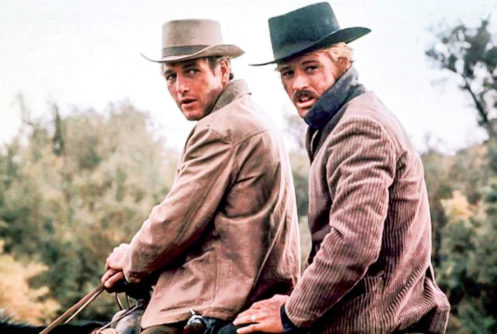 The Denver film community recently lost a giant with the passing of Brit Withey, the Artistic Director for the Denver Film Society. Brit was the driving force behind the Denver Film Festival, the Science Fiction Film Series, and countless other series, events, and programs at the Film Center. He was a colleague and a friend. Most notably, we teamed up on the Sci-Fi Film Series and it has become one of the most successful series in the history of the Film Society during its 9-year run. His passing leaves a gaping hole in the Denver Film Community, and he can never be replaced. I dedicate this column to him, and I review two of his favorite films of all time.
The Denver film community recently lost a giant with the passing of Brit Withey, the Artistic Director for the Denver Film Society. Brit was the driving force behind the Denver Film Festival, the Science Fiction Film Series, and countless other series, events, and programs at the Film Center. He was a colleague and a friend. Most notably, we teamed up on the Sci-Fi Film Series and it has become one of the most successful series in the history of the Film Society during its 9-year run. His passing leaves a gaping hole in the Denver Film Community, and he can never be replaced. I dedicate this column to him, and I review two of his favorite films of all time.

Butch Cassidy and The Sundance Kid
Butch Cassidy and The Sundance Kid (1969)
The late 1960s marked a sea change in the film industry. The old Hays Code, in effect since the late 30s, was finally abolished. This is the classic Hollywood cinema-era set of rules that all films had to follow. This included couples sleeping in separate beds, no blood, no drug use, no sex…. With the film industry dying due to an influx of more provocative European films, the breakdown of the studio system, the mass move to the suburbs, and a sweeping generational change, the Code became obsolete. The rating system was instituted and, well, all hell broke loose. Films immediately included explicit violence, explicit sexuality, and all manner of hedonism. Just think of the films released in 1968/1969: Easy Rider, Bonnie and Clyde, and The Wild Bunch, to name a few. Butch Cassidy… came out during this era.
Starring Robert Redford and Paul Newman, the film was first and foremost a post-modern Western. But it was also a comedy, a drama, a love story, and a searing political satire. Director George Roy Hill and writer William Goldman fashioned a timeless film that appealed to all audiences. Goldman would go on to write the book and film versions of The Princess Bride, and you can see the seeds of that story in this film. (Think: the never-ending chase.)
The film is most notable for the duo of Newman and Redford, the first time they would be paired on screen. While Paul Newman was one of Hollywood’s biggest stars of the era—rivaling only John Wayne and Steve McQueen—Robert Redford was a relative unknown outside of Hollywood. Redford attended the University of Colorado on a baseball scholarship before beginning his acting career on the NYC stage. His move to Hollywood was rocky, including several box-office failures and questionable role choices. Hill’s choice of Redford would propel Redford to super-stardom.
The film is based on the true story of Butch Cassidy and the Sundance Kid, although it is not entirely historically accurate (the final “blaze of glory” shoot-out was largely dramatized). Goldman wrote the script after several years of research but still fictionalized much of it. The story follows Butch and Sundance from their final days in the U.S. being chased by a “super-posse” to their seven-year stint robbing banks in Bolivia. Despite initially negative reviews, the public flocked to the see the film, and it became a huge box-office hit. It was nominated for seven Academy Awards and won four (Cinematography, Score, Song, and Original Screenplay).
And, oh yeah, the film was damn cool.

The Sweet Hereafter
The Sweet Hereafter (1997)
This moody film from director Atom Egoyan tells the story of tragedy in a small Canadian town. A school bus crashes on the ice, and most of the kids die. The town is left to wallow in its grief. The big city lawyer who comes to town to represent the families finds a mixture of indifference, enmity, and sadness. He represents a few families, and still others want no part of it. Make no mistake, this is not a procedural trial film. It is about loss, it is about grief, and it is about the base emotions that make us human. It is ironic that this film was one of Brit’s favorites.
While the film is light on dialogue, it is heavy on mood, emotion, and humanity. It is not always the side of humanity we want to see, but it is the side of humanity that exists in all of us, lurks beneath the service, and rears its ugly head all too often. This is Egoyan’s triumph—he shows us the open wounds and lets them fester. Roger Ebert called the film “an unflinching lament for the human condition.” Our favorite films aren’t always the best films, and many times they aren’t the happiest. Sometimes they shine a light on the ugliness, and sometimes they bring up repressed emotions. Either way, it feels cathartic.
Both films can be found on Demand.
Rest in peace my dear friend.
Vincent Piturro, Ph.D., is an associate professor of Cinema Studies at Metropolitan State University of Denver. He can be reached at vpiturro@msudenver.edu. Follow “Indie Prof” on Facebook for updates about film events and more reviews.




0 Comments